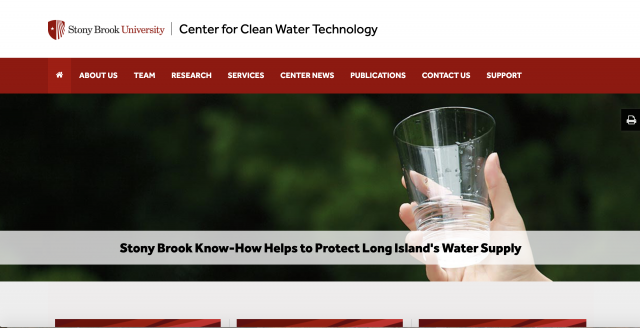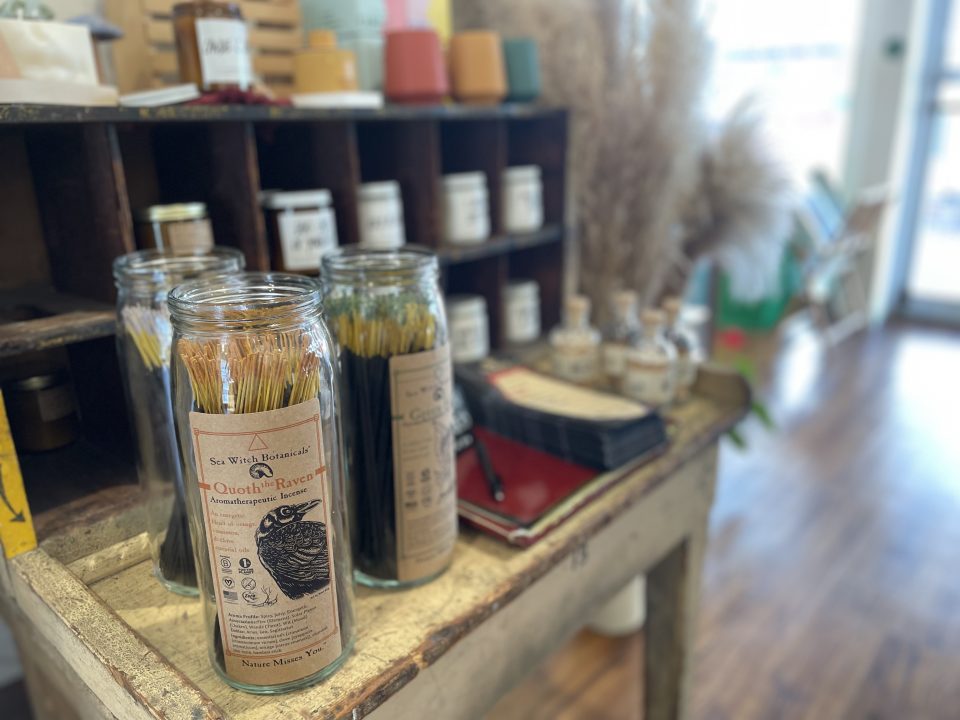
Stony Brook University’s Center for Clean Water Technology (CCWT) has revealed an updated septic system that removes water contaminants at a high rate.
The new systems could be available for installation in Suffolk County as soon as June 2022.
The new technology is an on-site septic system with nitrogen-removing biofilters (NRB’s) that would reduce levels of harmful chemicals including nitrogen pollution and 1,4-dioxane, a likely human carcinogen from wastewater.
Nitrogen pollution in water systems causes algae to grow rapidly and can harm the water quality. Specifically on Long Island, nitrogen is the leading cause of water quality deterioration in the region’s estuaries.
The Environmental Protection Agency (EPA) designated 1,4-dioxane an “emerging contaminant,” which means the chemical can pose ecological or human health concerns. This chemical has also been linked to tumors in the liver, kidneys and nasal cavity.
A concentration of 0.35 parts per billion of 1,4-dioxane in tap water represents a one-in-a-million cancer risk, according to the EPA. This concentration has also become the EPA standard. Long Island has levels 100 times higher than this standard and have been found to be the highest in the nation.
Levels are specifically high throughout Long Island because the region’s sources of drinking water are underground wells and septic tanks. Due to industrial manufacturing operations throughout the region, it becomes easier for 1,4-dioxane to enter the groundwater through spills and dumping.
“We rely 100% on the underground drinking water and we also use it as a disposal site for untreated sewage,” Adrienne Esposito, executive director of the Citizens Campaign for the Environment, a nonprofit organization that strives to advance stronger environmental policy, said. “Nothing about that makes sense and that is not sustainable for Long Island.”
Both 1,4-dioxane and nitrogen are also difficult to remove from water systems and removal treatments can also be costly, including the advanced oxidation process treatment system. Dr. Cheng-Shiuan Lee, a research assistant at the CCWT, said that it is about their physicochemical properties.
“Both of them are stable and highly soluble in water,” he said. “Therefore, the traditional water treatment processes cannot degrade, remove and separate them from the aqueous phase.”
The new on-site septic system with NRB’s would not be as costly as other treatment processes since the systems will not require aeration, installation or operation. During the experimental phase, installing the NRB’s cost around $32,000, but would eventually cost less than $20,000 to install, according to the center.
In terms of strategic plans for NRB’s in the future, Frank Russo, associate director of the center, said that the full scale prototype is in the process of being patented and will be called the “FlexTreat Biofilter.”
“That prototype will be installed at the Wastewater Research and Innovation Facility sometime this summer,” he said. “If that continues to work and shows tremendous results, you know hopefully one day we’ll have our patented system start to go through the [Suffolk County Sanitary Code] Article 19 process.”
Article 19 of the Suffolk County Sanitary Code verifies and approves innovative alternative onsite wastewater treatments for the county.
The center also recently published a journal article on the one-year study behind the NRB’s ability to remove 1,4-dioxane.
Lee, a co-writer of the center’s article, says that the next steps are to deeper analyze the NRB’s.
“We have been conducting a series of control experiments in the lab to better understand the 1,4-dioxane removal mechanism, or in other words, biological degradation, in the NRB,” he said.
The center collected tap water samples and septic tank effluent from multiple residences located throughout Suffolk County and monitored the samples for 1,4-dioxane over the course of a year. The results showed that 1,4-dioxane concentration in wastewater that had been leaving resident’s homes was on average 10 times higher than the tap water concentration of the chemical.
“This finding is important because what it suggests is household activities, particularly the use of products containing 1,4-dioxane, are significantly contributing to 1,4-dioxane in the sewage leaving the homes, which ultimately ends up polluting our groundwater environment,” Dr. Arjun Venkatesa, associate director for Drinking Water Initiatives at the center, said during a press conference last month.
Trace amounts of 1,4-dioxane present in soaps, gels and cleaning products then get washed down the drain and go into the ground, eventually entering Long Island’s aquifer.
The Citizens Campaign for the Environment conducted their own test in 2019 and found 1,4-dioxane in 65 out of 80 household products.
“We tested laundry soaps, bath gels, hand soap, shampoo and baby products,” Esposito said. “But the product that had the highest amount was Victoria Secret’s bath gel. 17,000 parts per billion, where the drinking water standard is one by the way.”
Esposito said that her organization went to the state legislature pushing for a bill that bans 1,4-dioxane.
“It was a huge battle,” she said. “Every corporation was lobbying against it, including Dow Chemical, Procter and Gamble and Lysol. Every large scale industry and trade group was fighting against the bill and we won.”
In December 2019, New York Governor Andrew Cuomo passed a state law that will place a full ban on 1,4-dioxane in household products in New York. The ban goes into effect in December 2024. Governor Cuomo also adopted a drinking water standard for 1,4-dioxane in July 2020. The standard is the first in the nation and set the maximum contaminant level of one part per billion for 1,4-dioxane.
The NRB’s can reduce 1,4-dioxane to levels even lower than the one part per billion standard, according to the center.
The New York Public Interest Research Group (NYPIRG) released a report back in 2019 regarding emerging contaminants in New York’s drinking water systems.
Elizabeth Moran, an environmental policy director at the NYPIRG, said that the most interesting highlight of the report was the amount of contamination found on Long Island. The highest level detected of 1,4-dioxane was in the Hicksville Water District at 34 parts per billion, which is 97 times higher than EPA’s health guidance.
However, this was not a surprise for her.
“Long Island does have geology that renders it far more susceptible to contamination,” she said. “So it’s not something to see more contamination in Long Island than perhaps other regions of the state.”
David Karayof, a resident of Ronkonkoma, said that it is unfair that although Long Islanders have a high cost of living, access to clean, quality drinking water is unreliable.
“This is not a new problem, and unfortunately, it seems that addressing the horrible quality of our water does not rank high in importance for the majority of distracted members of the community — or so says the ballot box,” Karayof said.
Karayof supports the updated septic system and says that it should have been instituted a long time ago.
“They [legislators] should be expanding our sewer systems — our reliance on cesspools is a factor in water pollution, not to mention the high upkeep and replacement costs,” he said. “This is necessary for improvement of our water quality, as well as in the revitalization of our workforce by building the necessary infrastructure to support us.”
Moran stressed the importance of residents like Karayof being aware of the state of their water quality.
“I think that New York state needs to be much better about having a public system where the public can regularly search for their information,” Moran said. “The other thing that municipalities and water utilities should be doing is being very transparent about what’s in their water.”
In terms of future plans, NYPIRG also plans to release a study this spring that will analyze a new list of contaminants, but will also continue to stress some of the same issues.
“The recommendations we had made in our first report, we will likely be making again,” Moran said. “We issued that report in 2019 and the state still has not fully implemented a couple of laws intended to remedy some of the issues we uncovered in that report.”
They are also pushing for the Clean Water Infrastructure Act, which currently has a $500 million dollar proposed allocation, to be a main funding initiative in the upcoming state budget due April 1.
“It’s very important that it goes through at a minimum, if not more,” Moran said. “There are huge water infrastructure needs across New York state that exceed $80 billion over the next 20 years. So this funding program is particularly important for Long Island and the state as a whole.”
















